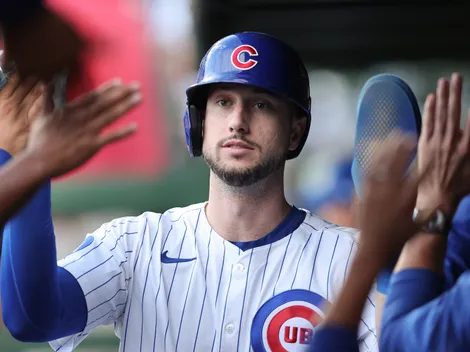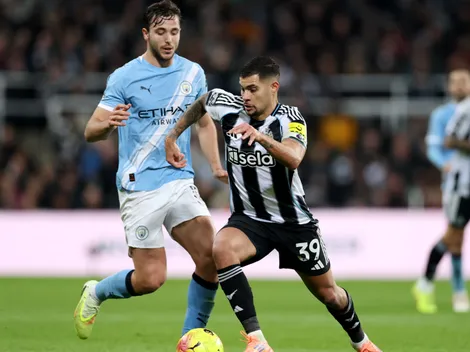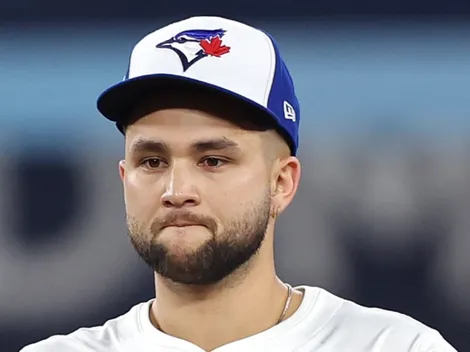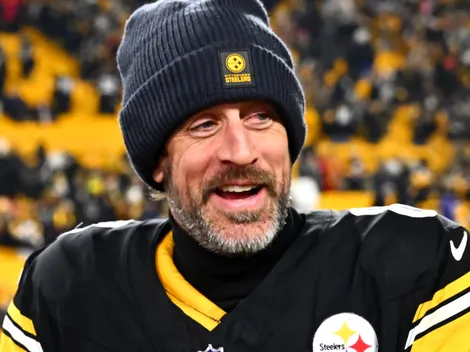As the USMNT entered the 1998 World Cup, soccer in the United States was growing in its popularity, all be it very slowly. While not yet a major sport, the USMNT was consistently playing in front huge crowds and Major League Soccer was two years old with promising attendance numbers.
Along the way the USMNT, now coached by Steve Sampson had achieved great heights. In 1995 the United States had placed 4th in the Copa America in Uruguay, defeating Argentina and Chile along the way. By the start of MLS, the league had played matches to crowds as large as 25-90,000. The USMNT had also introduced many new players along the way, defender Eddie Pope, Brian McBride, and Frankie Hejduk to name some.
The old guard Eric Wynalda, John Harkes, Marcelo Balboa, Tab Ramos, and Alexi Lalas were still front and center on the team, but a change in formation and a serious problem among teammates were about to doom the USMNT on their way to France 98.
Where the USMNT was before France 98
The United States was seeing a shift on the team that made it to the round of 16 in the 1994 World Cup. Tony Meola was long gone as the starting goalkeeper as Kasey Keller and Brad Friedel were competing for the position behind some very good play on their club teams, ultimately Kasey Keller, who was a commanding Premier League keeper, would win the spot.

Kasey Keller throws out during the World Cup group F game against Iran at the Stade Gerland in Lyon, France. Iran won 2-1. \ Mandatory Credit: Ben Radford /Allsport
Tab Ramos had suffered a devastating ACL injury but while he was working his way to get back on the roster, Claudio Reyna was the team’s new official number 10, although it took Reyna a lot to be as creative as Ramos.
At the back the emergence of Eddie Pope as a high-level defender would be an added bonus, Pope had interest from Liverpool and Ajax at the time of qualification.
Qualification had been fairly easy for the United States in round 1 of Concacaf World Cup qualifying. The USMNT went 4-1-1 in round 1 qualifying with Costa Rica to the final hexagonal round. The second round brought a bit of complication, the USMNT had started inconsistent going 1-1-1 even recording a draw at home against Mexico. By the middle of qualification, the US had stumbled a bit. A 1-1 draw with Jamaica left the team nervy but eventually a big 0-0 draw at Azteca and a 3-0 win over Canada away gave the USMNT their ticket to France 1998.
MLS’ role in France 98

Eddie Pope of the D. C. United (right) chase the ball during the MLS Cup championship game at RFK Stadium in Washington, D.C. The United won the game 2-1. (Getty Images)
During the qualification process of France 1998, MLS was getting off the ground. The results were mixed, on one side the league had brought some big names at the tail end of their careers to play a big role in the league. The league provided many Americans a chance to play but the level of play for the most part was wanting. Teams were all over the place, DC United, LA Galaxy, and the Tampa Bay Mutiny were the best clubs and most well organized.
The rest of the league suffered from a lot forplayers just trying to be professionals, still talents like Eddie Pope, Frankie Hejduk, Jeff Agoos, Brian Maisonneuve, and Preki gave the team new options. The level of play of MLS did hurt others, Alexi Lalas was not playing well at New England, Marcelo Balboa was on a very poor Rapids team, and Eric Wynalda’s form as an international goal scorer had dropped completely.
A promising 1998 Gold Cup

The USMNT celebrate their 1-0 victory over Brazil in the 98 Gold Cup. (Concacaf)
Despite some of the issues surrounding the level of the team the USMNT did play an international tournament in the lead up to France 98. The Concacaf Gold Cup provided the US another chance to test themselves before the big event. The team made short work of Cuba and defeated Costa Rica with a big goal from Preki in the group stage.
The next match was a semifinals clash with Brazil who brought Romario to the competition. Brazil playing the Gold Cup with a mixed squad dominated the Americans in the match, as they had done in the 94 World Cup and semifinals of the Copa America in 1995, but Kasey Keller kept the USMNT in the game with a world class performance. Romario was denied with three-point blank saves from Keller who was at a different level entering the tournament.
A surprising Preki goal gave the USMNT a 1-0 win over Brazil, the first ever by the program, and a lot of optimism for the team going into the World Cup. In the final the US would lose to Mexico 1-0 and despite losing the final Sampson and the few pundits at the time felt good about the team’s possibilities.
A draw that was much more difficult than imagined

The Germany team line up before the World Cup F group game against the USA at the Parc des Princes in Paris. Germany won 2-0. \ Mandatory Credit: Clive Brunskill /Allsport
In retrospect, despite all the USMNT had achieved before the World Cup, their draw was a big reminder the federation still had a long way to go. The Americans were drawn with Germany, Yugoslavia, and Iran. Yugoslavia was a dark horse by many with players on the best teams in the world. Germany, while very difficult, was an aging side, a team that on a good day the US could get something out of it. Berti Vogts was so ill-prepared for the American team he said in a press conference how much he admired Tony Meola until he was corrected by the German media that Meola had not played for the USMNT in three years.
Amid a World Cup scandal breaks
Off the field the team was beginning to suffer, mostly due to situations surrounding coach Sampson. A lot of the veteran players were upset they were being phased out at a critical time before a World Cup. During qualification Sampson had called in German American players to aid during certain matches, Michael Mason and David Wagner, both would not make the final roster.
After defeats to the Netherlands and Belgium, Sampson knew in order to prepare for Germany he needed to adjust the squad. In search of those answers the USMNT tied Paraguay 2-2 in San Diego in a match where the USMNT looked ready for the big event after a pair of poor defeats.

John Harkes (Getty Images)
It was between those matches that Sampson learned a brutal truth. Roy Wegerle approached Sampson about an affair the USMNT captain John Harkes was having with the wife of Eric Wynalda. Uncomfortable with the whole situation and in search of a major shake up to get his team ready for France, Sampson made a brutal choice, dump Harkes from the final roster.
The news of the omission of Harkes sent shockwaves through the soccer media in the United States. The official reason? Harkes, a defensive midfielder, did not want to take up a more defensive role in Sampson’s new 3-6-1 formation. Sampson also cited, “conduct unbefitting of a captain”.
Sampson told the Daily Mail in 2010, ‘I felt that these are the kinds of issues that need to stay in the locker room and within the team and not be exposed to the public,’ he said.
‘The private issues for me were the most serious issues. I think I could have lived with everything else and kept John on the team if it had not been for the private issues. It’s one thing to have an affair outside the team. It’s another to have one inside. There are just certain lines that one cannot cross. Maybe now people will have a little bit more of an understanding as to why I made such a critical decision back in 1998.”

Head coach Steve Sampson talks to the media during the USA World Cup trainning at the Parc De Princes Stadium in Paris, France. Mandatory Credit: Brian Bahr /Allsport
Both Wynalda and Harkes have since spoken of the issues before 1998, with Wynalda even placing the blame on Sampson so to speak, the former all-time USMNT leading goal scorer stated he would have not had any issues playing with Harkes on the 98 team despite all that was going on. Harkes, who has denied an affair took place, called that moment the most “difficult in his life”.
As the team was trying to process losing their captain, Sampson did little to endear himself to the other veterans on the team, with Alexi Lalas, Marcelo Balboa, and Mike Burns playing some of the worst soccer in their careers, the federation and coach identified David Regis, a French defender playing in Germany and fast tracked his citizenship. Regis would quickly be added to the team and the USMNT introduced their new formation against Austria in a friendly and won 3-0.
In the lead up to the 1998 World Cup the American’s went 6-3-3, and the 3-6-1, looking promising, could effectively contain Germany in their opening match. Along the way Lalas, Balboa, and Wynalda saw their roles on the team diminish.
A World Cup that felt like a brick wall

The United States starting XI against Germany (Getty Images)
The stage was set as the USMNT entered their opening match of France 98 against an aging yet still deadly German side that boasted Jürgen Klinsmann, Andreas Köpke, Andreas Möller, and Christian Ziege.
Sampson would field a team that raised a lot of eyebrows, David Regis, Brian Maisonneuve, and Chad Deering all got starting nods over more experienced players, and Tab Ramos was kept on the bench as the coach looked to contain the Germans. What was working in the friendlies was completely ripped apart by the Germans from the opening whistle. Germany was not tactical against the US but rather physical by basically trying to run over the Americans.
A shocked US side still trying to adjust to a “go for broke” German team went down 1-0 in the 8th minute off a corner kick goal by Andreas Möller. Shell shocked the Americans survived the first half and had 5 very good minutes in the second where Reyna’s shot was saved, and Frankie Hejduk’s header was cleared by Köpke. Tab Ramos entered the match to help a bewildered Claudio Reyna and also had a close outside shot attempt, but not before on a counter Jürgen Klinsmann would score the second. 2-0 down the Germans took their foot off the gas and the Americans saved face with only a 2-0 defeat.
Six days later and facing elimination the USMNT needed a result against Iran in their second match. The game was fueled by outside issues pertaining to the US- Iran political conflicts of old. Before the match President Bill Clinton addressed the nation in a video, the teams took the field in Lyon and posed together for a group team photo.

Frankie Hejduk of the USA holds off Mehdi Mahdavikia of Iran during the World Cup group F game at the Stade Gerland in Lyon, France. Iran won 2-1. \ Mandatory Credit: Stu Forster /Allsport
On the field Sampson went with a 3-5-2 with Brian McBride being the focal point of the US attack. Claudio Reyna got much needed help as Tab Ramos started the game. From the start the Americans played with fire, resembling the team that defeated Argentina 3-0 in the 1995 Copa America. Shot after shot the Americans watched their attempts be saved, hit the post, or go so close. During their best moment in the match disaster broke in the 40th minute when on a counter a looping header beat Keller and gave Iran the lead.
In the second half the USMNT hit the post 4 times in search of an equalizer with time beginning to run out Eric Wynalda was inexplicably left on the bench in favor of the less productive Earnie Stewart. Preki came on in hopes of repeating his magic against Brazil in the Gold Cup but on a counterattack, Iran sealed the Americans fate with a goal by Mehdi Mahdavikia in the 84th minute. 2-0 down Brian McBride got a goal in the 87 minute and despite 4 minutes of added time the spirited Americans could not tie the match. Heartbroken, defeated, and embarrassed the United States were out after 2 games in France 98.
Before the team took the field against Yugoslavia, leaks about the poor morale of the team entering the World Cup began to surface. Also surfacing were the conditions the team was in, secluded in a wine vineyard, players were bored at the feeling of being “jailed” in France. Worse yet in a Bolavip interview Marcelo Balboa stated that while the players were on lock down, Steve Sampson was milking it in.

Mehrdad Minavand of Iran in action during the World Cup first round match against the USA at the Stade Gerland in Lyon, France. Iran won the match 2-1. \ Mandatory Credit: Stu Forster/Allsport
“Steve Sampson took the coaching staff to another resort that had a golf course and we trained, and we’d go back to being by ourselves and he’d go back playing golf. It turned into a bit of a Steve Sampson show, it was all about the coach. It started with kicking Harkes off the team… It started with the way he treated the players; he kicked me off the team and basically told me “I was a Bora boy” he didn’t have trust in me. When World Cup qualifying came and he needed players on the field, me, Alexi, Tab, and Eric were all on the field.
“So, at the end of the day, he made it all about Steve Sampson, look at the team that started against Germany, there was no experience out there… When you look at all the experience you had on the bench with Tab Ramos, Alexi, the team did a total 360 right before the World Cup… We were just individuals that were happy we qualified to the World Cup, and we did our best, under the circumstances.”
Tab Ramos also in a Bolavip interview was a bit more political in his response, “There were other problems, internal problems within the team, but to be honest I don’t think it would have made a difference. We lost to Germany, a team that was better than we were, we lost to Yugoslavia, a team that was better than we were, and we lost to Iran, a game that could have gone either way, they had a good team at that time, and we lost a game we could have won and that happens in sports. In general, had we gone all out everything perfect, everyone in Europe, we’d likely still would have lost to Germany and Yugoslavia and likely out in the first round…”
Against Yugoslavia the Americans looked lifeless, nonetheless lost 1-0 in one of the most forgettable World Cup matches ever played by the United States. Despite being the worst team in France 98 a few players on the US team did stand out, Frankie Hejduk, Cobi Jones, and Brian McBride all had respectable matches for the US team.
Aftermath of France 98

Bruce Arena (Getty Images)
The disaster that was the World Cup in 1998 for the US Soccer program was a bitter pill that more work needed to be done. The group of 1994 had done all it could and would need a massive overhaul.
MLS continued to move along with issues of being a third-year league, but storm clouds were gathering around the league entering the 2002 World Cup, where it looked like the plug might be pulled.
Steve Sampson would be fired right after the tournament and players like Alexi Lalas, Tab Ramos, Eric Wynalda, and Marcelo Balboa would play in their final World Cup for the United States.
Bruce Arena would be named the new USMNT coach after leading DC United to two MLS Cups, building a solid foundation on the field, and winning two international titles with the club. Under Arena the US team would slowly find themselves and when it looked like soccer was going to die yet again in the United States the 2002 World Cup happened, but that’s a story for another day.





